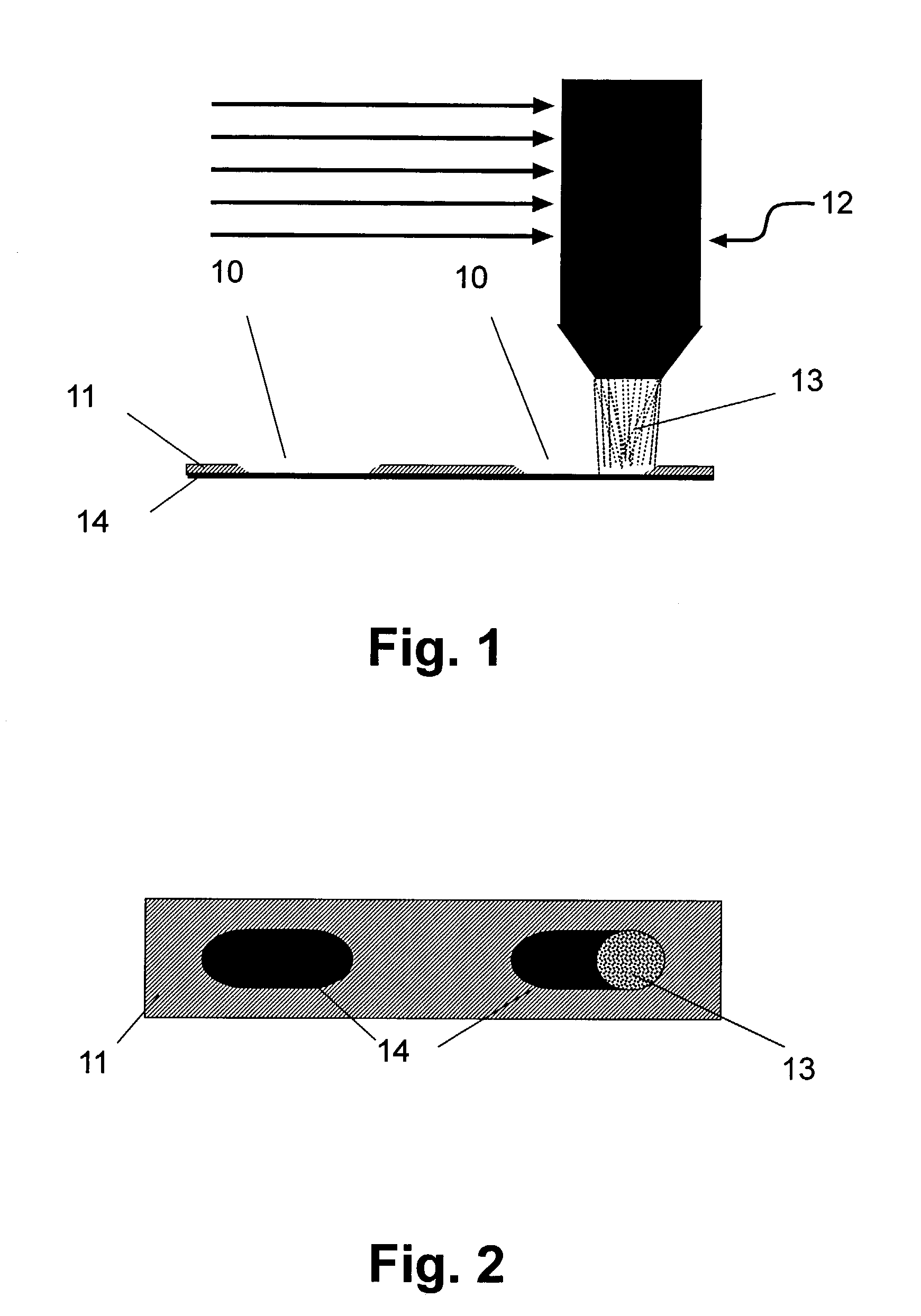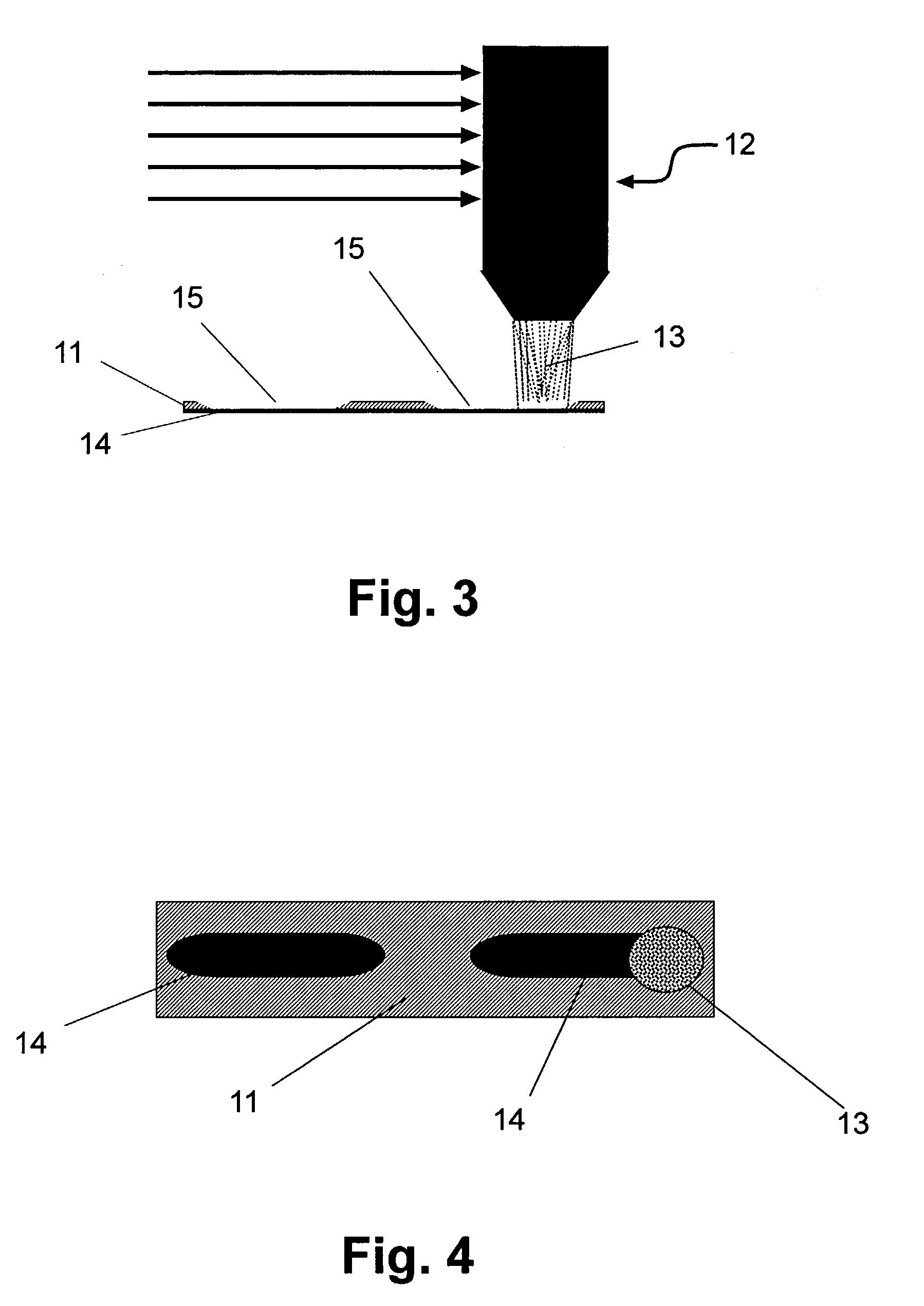Conveyorized blind microvia laser drilling system
a laser drilling and conveying technology, applied in the field of conveying blind microvia laser drilling system, can solve the problem of ineffective manufacture of vacuum hold down, achieve the effect of improving the peak power of the laser beam, “cleanly” removing material, and high speed ra
- Summary
- Abstract
- Description
- Claims
- Application Information
AI Technical Summary
Benefits of technology
Problems solved by technology
Method used
Image
Examples
Embodiment Construction
Overview of System and Process
[0064]In accordance with a preferred embodiment of the present invention, a laser system is constructed by integrating a sufficiently powerful (preferably >240 watts, more preferably 500 watts) sealed carbon dioxide (CO2) laser emitting an infrared (10.6 micrometer) laser beam pulsed by using radio frequency controls (RF excited). Synrad, Inc. (Mukilteo, Wash., U.S.A.), Rofin Sinar (Hamburg, Germany) and Coherent, Inc., (Santa Clara, Calif., U.S.A.) make lasers that can be adapted to perform as described herein. The 10.6-micrometer frequency of the laser beam is important so that the natural reflective properties can be utilized where the beam is not absorbed by the copper clad of the circuit board conformal coat, allowing the copper clad thickness to be very thin. Since the process of removing dielectric material is a photo-therm process, heat is involved and must be controlled to the extent possible. The other material contributing to the success of t...
PUM
| Property | Measurement | Unit |
|---|---|---|
| Mass | aaaaa | aaaaa |
| Speed | aaaaa | aaaaa |
| Electrical conductor | aaaaa | aaaaa |
Abstract
Description
Claims
Application Information
 Login to View More
Login to View More - R&D
- Intellectual Property
- Life Sciences
- Materials
- Tech Scout
- Unparalleled Data Quality
- Higher Quality Content
- 60% Fewer Hallucinations
Browse by: Latest US Patents, China's latest patents, Technical Efficacy Thesaurus, Application Domain, Technology Topic, Popular Technical Reports.
© 2025 PatSnap. All rights reserved.Legal|Privacy policy|Modern Slavery Act Transparency Statement|Sitemap|About US| Contact US: help@patsnap.com



